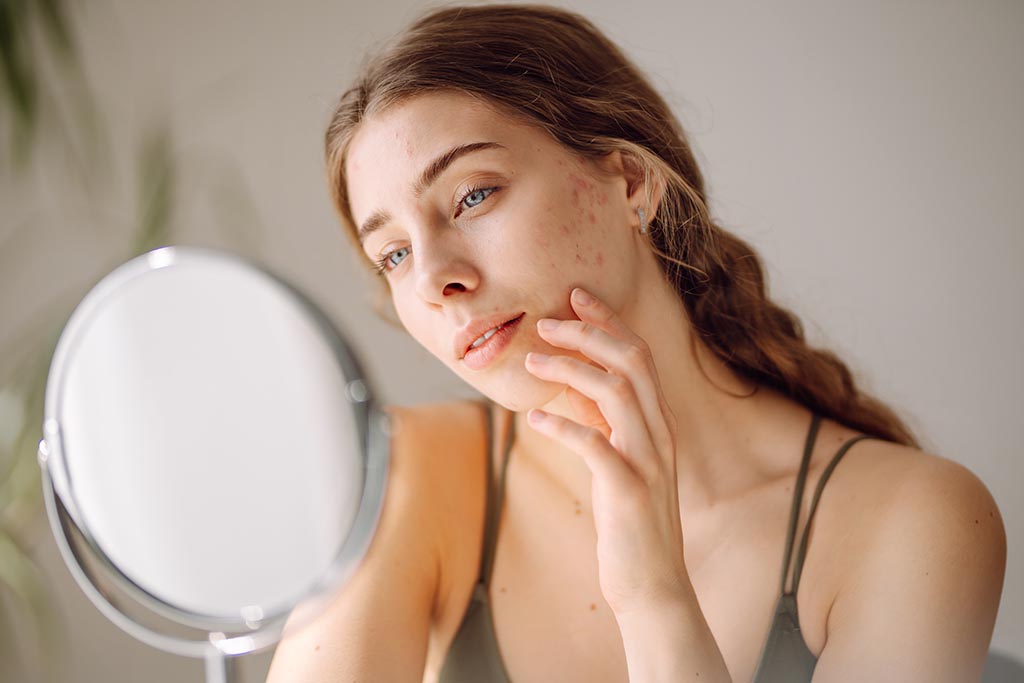Following an active breakout, acne scars can develop as part of the skin’s natural healing process, which may result in long-term changes to skin texture.
Whether they appear as deep indentations, raised marks, or stubborn dark spots, these scars tend to persist despite over-the-counter creams or DIY methods, which typically don’t address the underlying issues.
This guide walks you through everything you need to know—from recognizing what kind of scars you have, to choosing the best treatment for your acne scars.
Why Acne Scars Need Personalized Treatment
Acne scars come in different types, and each requires a targeted treatment to achieve visible results. Over-the-counter creams often fail to address the deeper layers of damage, especially for more severe scars. Factors like scar type, skin sensitivity, and even skin tone play a major role in how your skin responds to treatment.
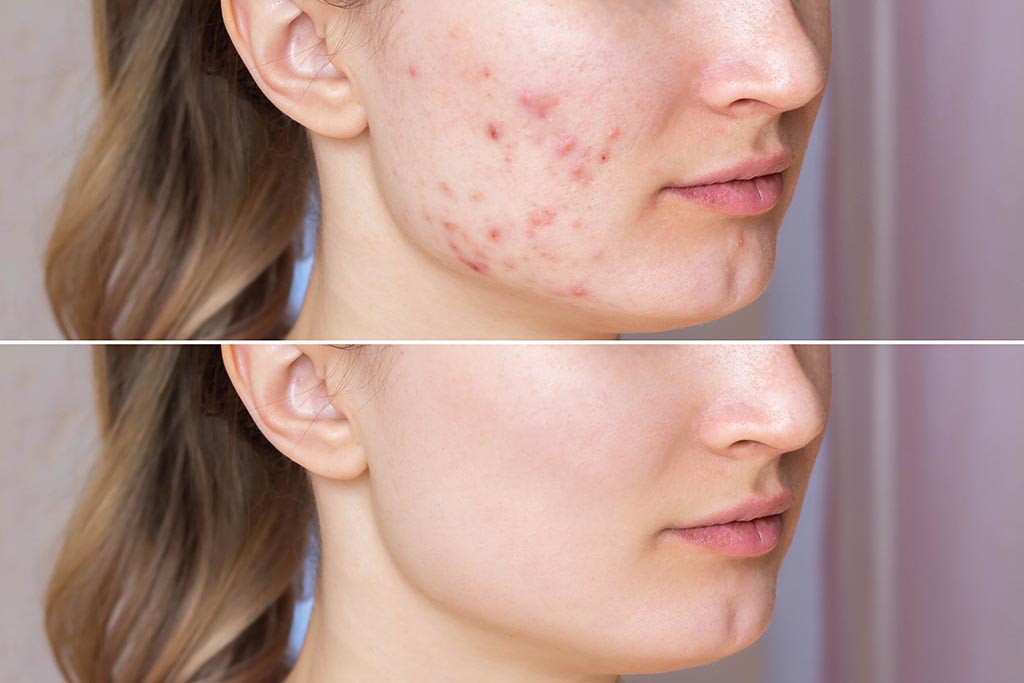
Failing to consider these factors can lead to months of trial and error with pricey creams that never live up to their claims. Worse, using the wrong products can cause irritation, hyperpigmentation, or even deepen the appearance of your scars.
A Step-by-Step Guide to Choosing the Right Skin Treatment for Acne Scars
Figuring out the most effective treatment for acne scars requires more than guesswork or trial-and-error with drugstore products. This step-by-step guide breaks down how to choose a skin treatment for acne scars by helping you understand what kind of scars you have, how your skin responds to treatment, and which options are clinically proven to deliver results.
1. Identify Your Scar Type and Skin Type
Before deciding on a treatment or purchasing over-the-counter creams, it’s important to understand what type of acne scars you’re dealing with and how your skin responds to treatment. Skipping this step makes it harder to achieve the results you’re hoping for.
Common Acne Scar Types
Ice Pick Scars
These are among the most stubborn types of acne scars. Ice pick scars form when serious breakouts, like cysts, cause lasting damage below the skin’s surface. They leave behind deep, narrow marks that look almost like enlarged pores. As deep acne scars, they usually require medical-grade treatments to smooth out the skin.
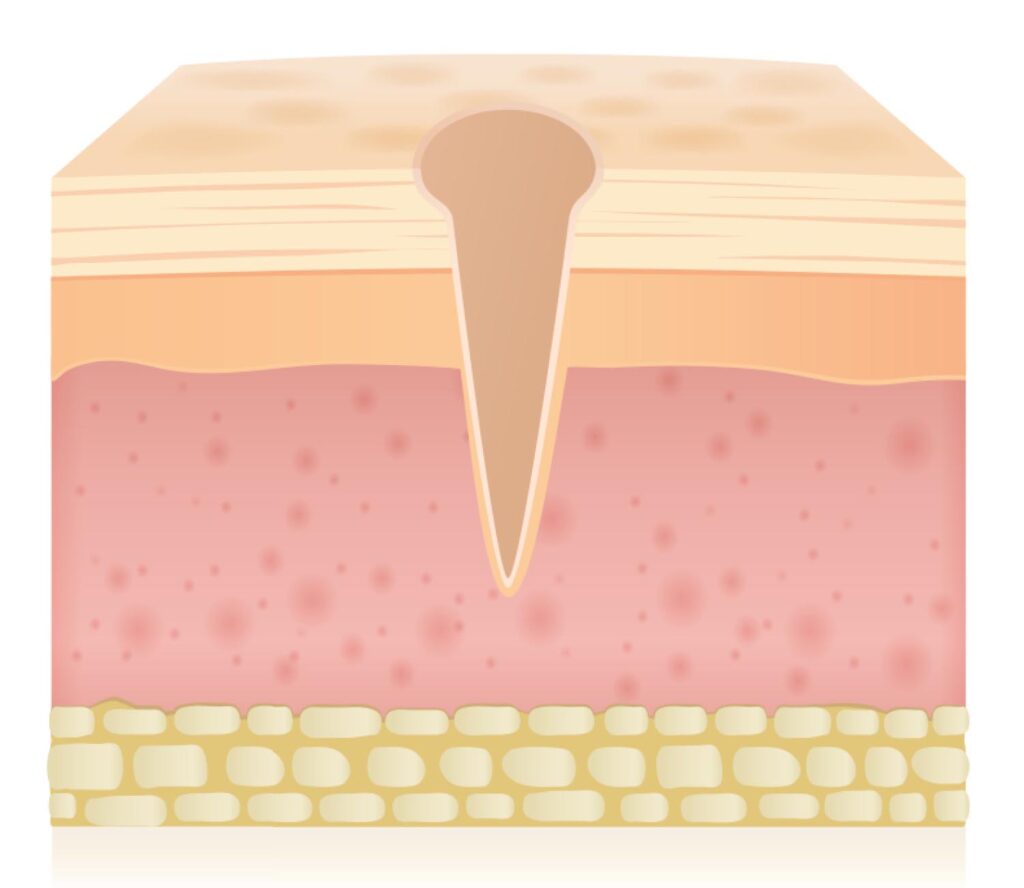
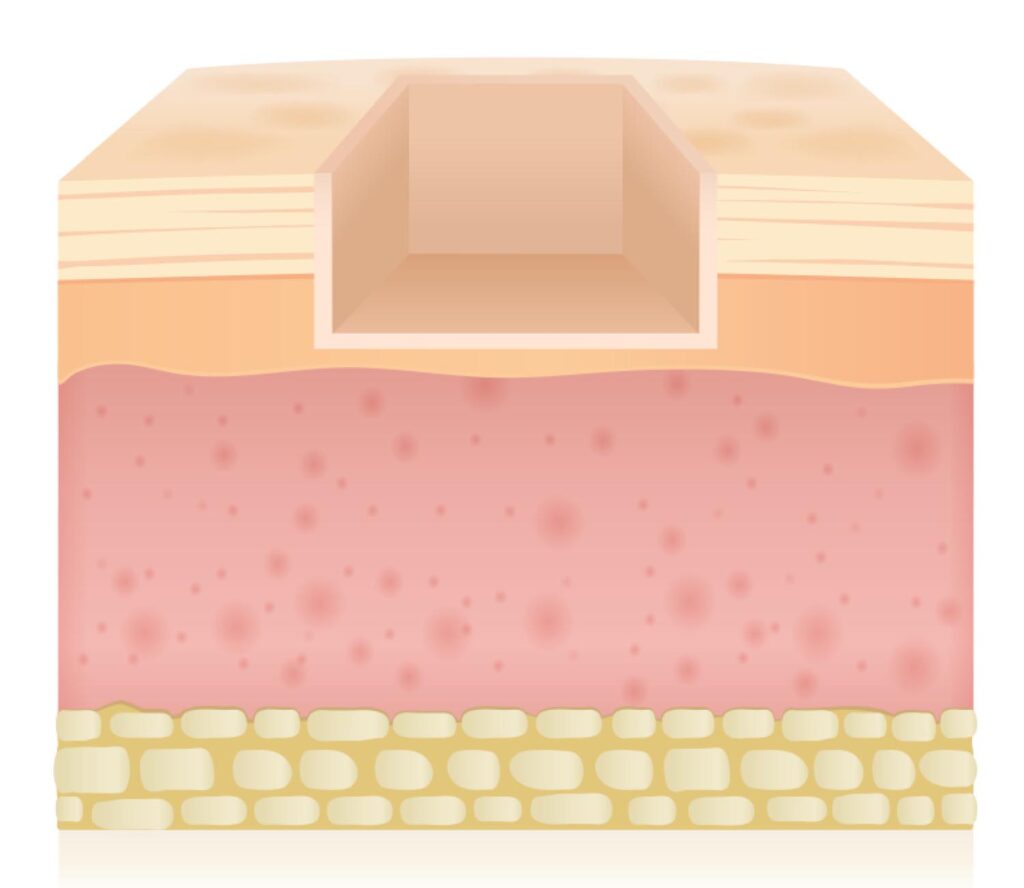
Boxcar Scars
These scars look like small craters in the skin, often with straight edges and a flat base. These marks usually form after acne-related inflammation breaks down collagen in the skin. These scars tend to show up on the cheeks and temples, and often benefit from a targeted facial treatment for acne scars to smooth and restore the skin’s texture.
Rolling Scars
Rolling scars tend to give the skin a bumpy or wavy appearance. These scars form when long-term inflammation from acne causes bands of scar tissue to form beneath the skin’s surface. These bands pull the skin inward, leading to soft indentations. The best treatment for rolling acne scars usually involves a combination of subcision and resurfacing techniques, which must be performed by trained skin professionals.
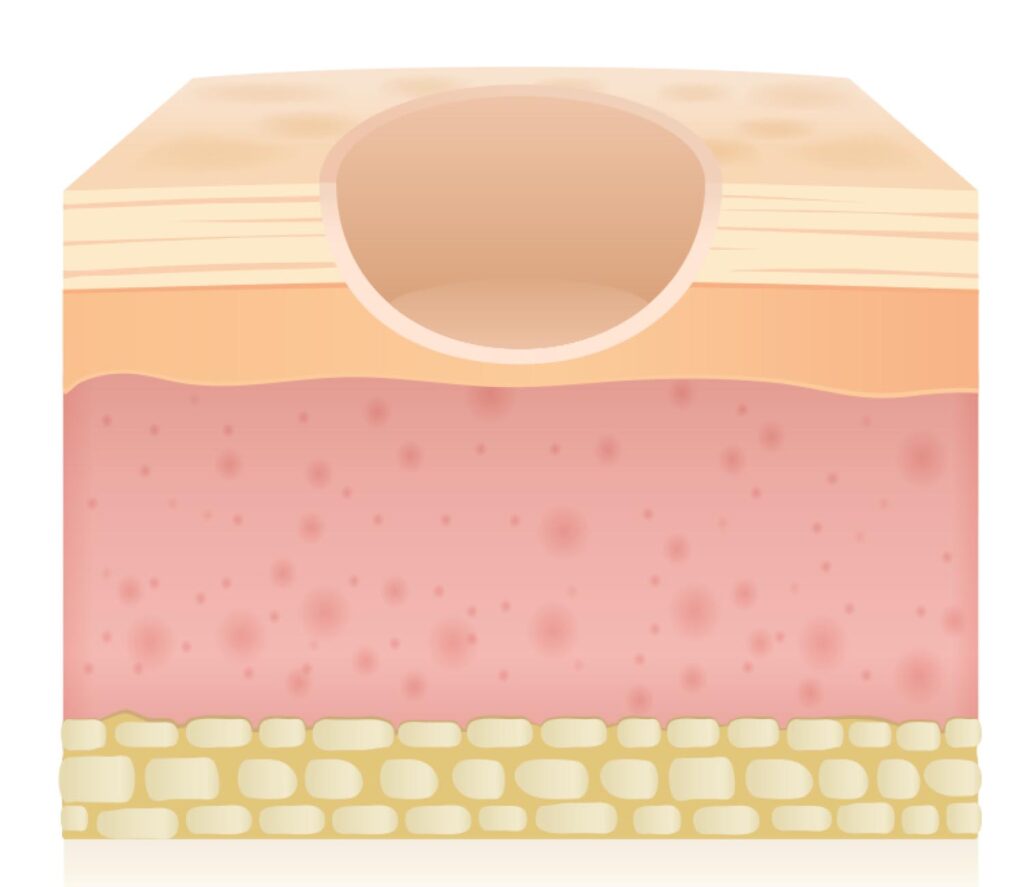
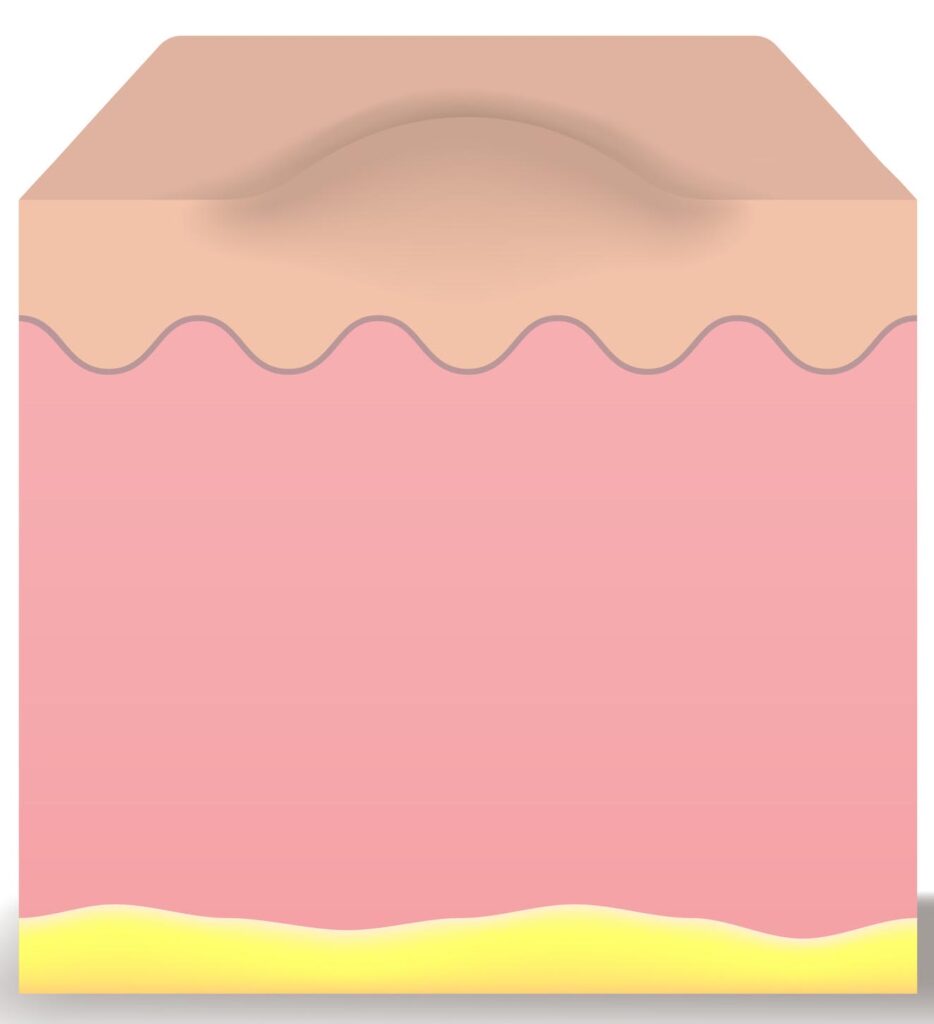
Hypertrophic and Keloid Scars
Unlike indented scars, hypertrophic and keloid scars rise above the skin’s surface due to an overproduction of collagen. These thick, raised scars are especially common in areas like the chest, jawline, and shoulders, and can sometimes feel itchy or tender. Keloids, in particular, tend to spread beyond where the original acne breakout was.
Post-Inflammatory Hyperpigmentation (PIH)
If your acne leaves behind dark spots even after it heals, you’re likely dealing with post-inflammatory hyperpigmentation (PIH). It’s not technically a scar, but it can still affect the skin’s appearance for months. These marks form when inflammation causes the skin to produce too much melanin, and they’re more common in medium to dark skin tones.
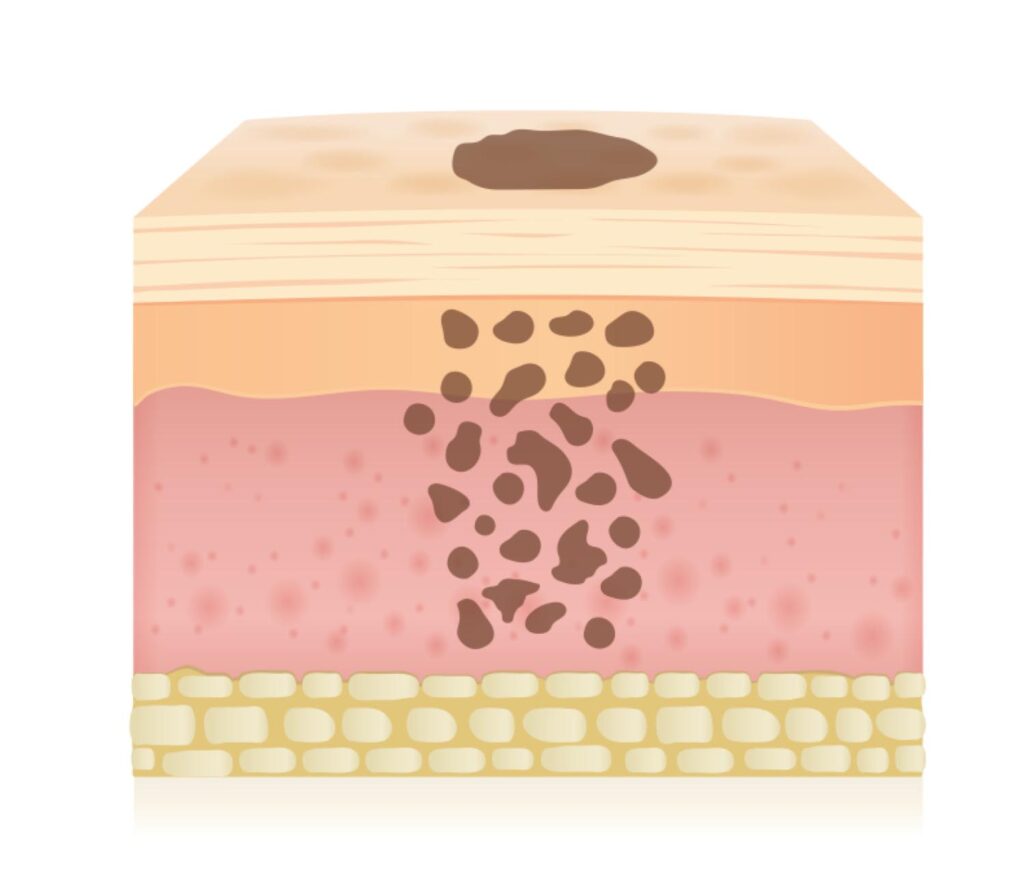
Helpful Guide on the Different Skin Types
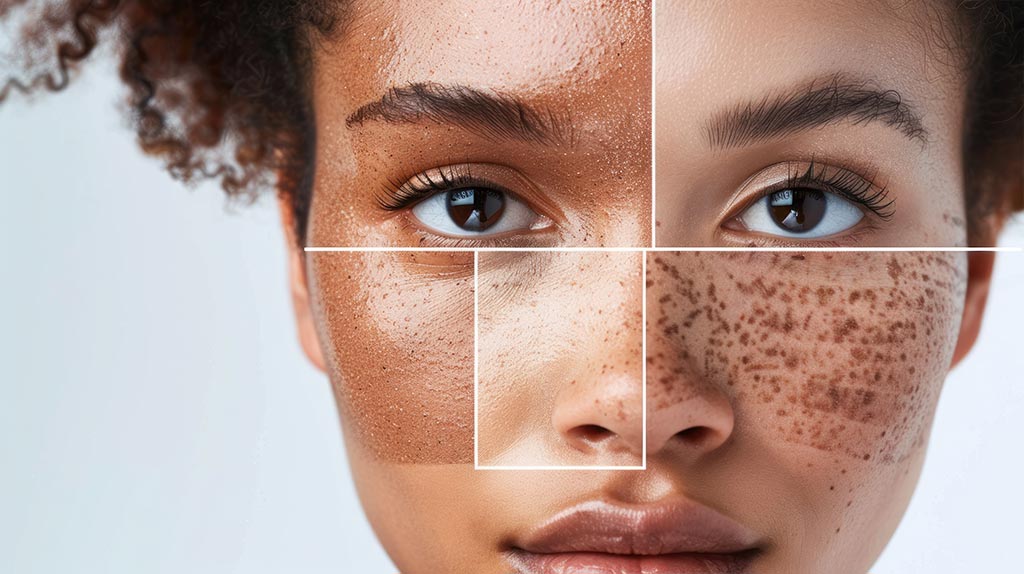
In addition to understanding the type of acne scar you’re dealing with, determining your skin type gives you a clearer picture of which treatments will work best. Here’s a helpful guide on the different skin types and how they may influence your results:
Oily Skin
✔ Constant shine by midday
✔ Frequent breakouts or clogged pores
✔ Larger-looking pores around nose and forehead
→ Best suited for oil-balancing treatments and light-based therapies.
Dry Skin
✔ Tightness after cleansing
✔ Flaking or dull patches
✔ More noticeable lines
→ Needs hydrating, less aggressive scar treatments.
Combination Skin
✔ Oily in T-zone, dry on cheeks
✔ Occasional breakouts and dry patches
✔ Uneven texture
→ Requires area-specific planning when choosing treatments.
Sensitive Skin
✔ Reacts quickly to products
✔ Redness, irritation, or burning sensations
✔ May coincide with conditions like eczema or rosacea
→ Needs slow, patch-tested approaches to scar treatment.
Normal Skin
✔ Rare breakouts
✔ Even tone and smooth texture
✔ Balanced oil and hydration
→ Most skin treatment for acne scars will be well-tolerated.
2. Explore the Best Treatment Options for You
If you’re wondering, “What is the best treatment for acne scars?,” the answer depends on two key things: the kind of scars you have and how your skin typically reacts to treatment. Some scars respond better to deep resurfacing, while others need collagen stimulation or pigment correction.
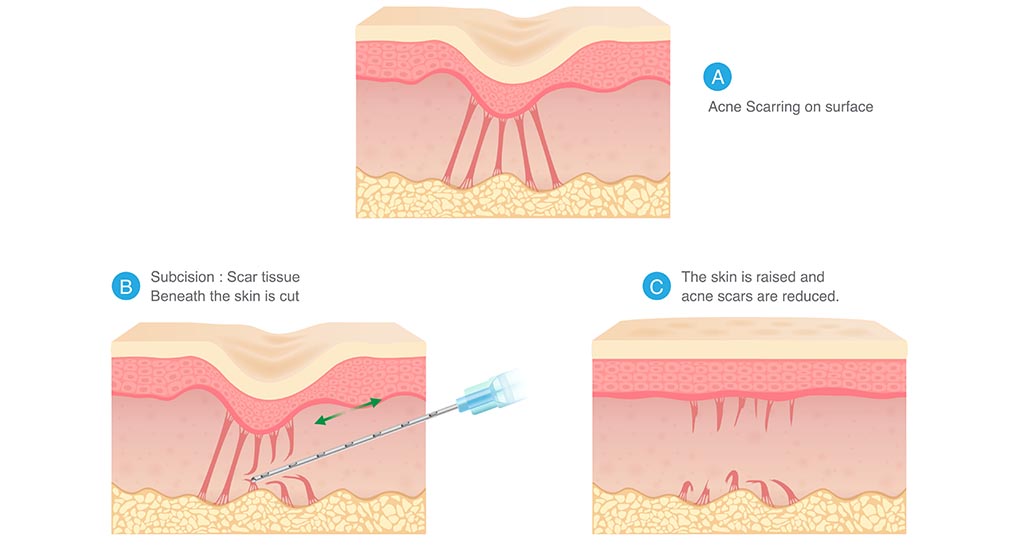
Choosing the right acne scar procedure starts with knowing your options. Below, we outline the most effective treatments, what they’re best used for, and how they compare in terms of downtime and results.

- TCA CROSS: TCA CROSS is a technique where trichloroacetic acid is carefully placed into deep acne scars, triggering new collagen growth over time. It’s especially effective for ice pick and deep boxcar scars. While it offers a targeted, affordable solution, multiple sessions may be needed for full results.
- Microneedling with PRP (Platelet-Rich Plasma): Microneedling with PRP, or platelet-rich plasma, is a treatment that involves creating tiny, controlled punctures in the skin using fine needles. This treatment works well for boxcar scars, rolling scars, and early atrophic marks. It’s safe for most skin types, including dry and sensitive, and has minimal downtime.
- RF Microneedling (Radiofrequency): By combining microneedling with radiofrequency energy, RF microneedling boost collagen deep in the skin. It works well for rolling and boxcar scars, improving skin texture and tone. This skin treatment for acne scars is safe for most skin types, with lasting results and little downtime, though it may need numbing and costs more than basic microneedling.
- Fractional CO2 Laser: Fractional CO2 laser is an ablative laser treatment for acne scars that works by removing the top layers of skin and stimulating collagen regeneration in the deeper layers. It’s especially effective for deep boxcar scars, ice pick scars (when paired with TCA CROSS), and mixed atrophic scarring. This treatment delivers noticeable, long-term results, but it does come with considerable downtime and a higher risk of post-inflammatory hyperpigmentation in darker skin tones.
- Subcision: Subcision is a minor surgical technique where a blunt needle is used to release the fibrous bands pulling the skin down from underneath. It’s often considered the best treatment for rolling acne scars, especially when scars are tethered and cause uneven skin texture. While minor swelling and bruising are normal, this type of skin treatment for acne scars is usually safe for all skin tones and often delivers visible improvement within a few days.
- Dermal Fillers: Dermal fillers offer a quick and effective fix for those with indented acne scars. This facial treatment for acne scars involves injecting hyaluronic acid or collagen boosters beneath the scar to raise it to the level of the surrounding skin. It’s especially helpful for rolling scars and mild boxcar types. The procedure offers immediate results with virtually no downtime, restoring smoothness and volume in minutes. While the effects typically last 6 to 12 months, fillers are a safe, temporary option for most skin types.
- Chemical Peels: Chemical peels use acid-based solutions to exfoliate the skin’s outer layers, making way for fresher, more even-toned skin underneath. They’re often considered one of the best skin treatments for acne scars when dealing with post-inflammatory hyperpigmentation (PIH) or mild surface-level scarring.
- Cortisone Injections & Silicone Therapy: For raised scars that feel itchy, tender, or firm, cortisone injections paired with silicone therapy provide targeted relief. This combination is most effective for hypertrophic and keloid scars, especially on the jawline, chest, or back. Though results aren’t instant, consistent care over several sessions leads to visible softening, especially in patients with darker skin who are more prone to raised scarring.
3. Consult an Experienced Skin Expert
While topical products may help with mild discoloration, treating moderate to severe acne scarring requires professional insight. Attempting to self-diagnose or use over-the-counter solutions without understanding your scar type can lead to irritation or post-inflammatory hyperpigmentation (PIH).
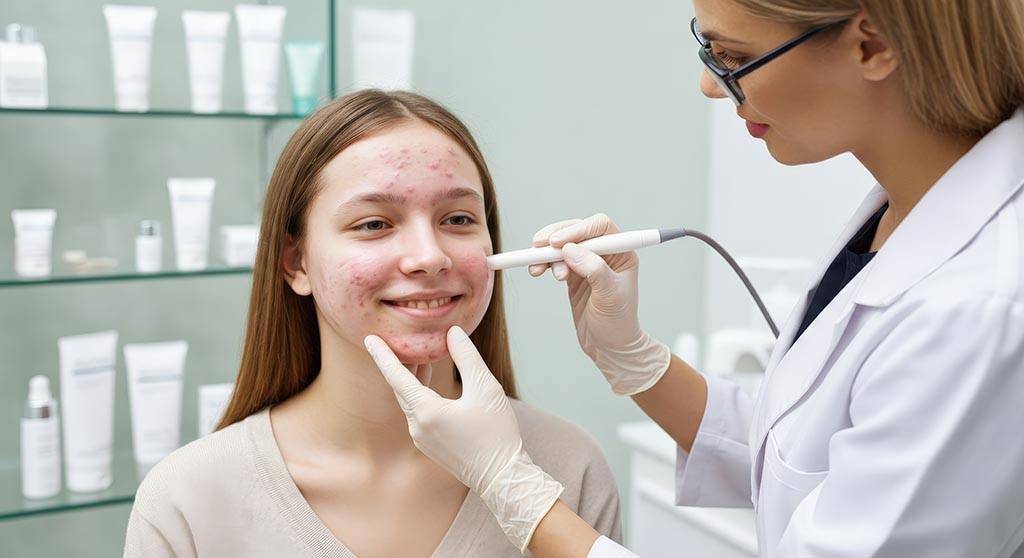
At Alinea Medical Spa, trained specialists assess both your scar and skin type to create a comprehensive, multi-modality plan. Whether you need CO₂ laser for atrophic scars or PRP microneedling for textural irregularities, our team offers the most appropriate and effective acne scar treatment for your skin’s specific needs.
Book Your Personalized Acne Scar Treatment Plan Today
Choosing the best treatment for acne scars requires a multi-step approach, which includes identifying your scar type, knowing what skin type you have, and understanding how your skin may respond to different treatments. That’s why professional guidance is essential for achieving clear, refined skin.
At Alinea Medical Spa, our team specializes in evidence-based acne scar treatments designed around your skin’s unique needs. Fill out our online form to schedule a free consultation today.

